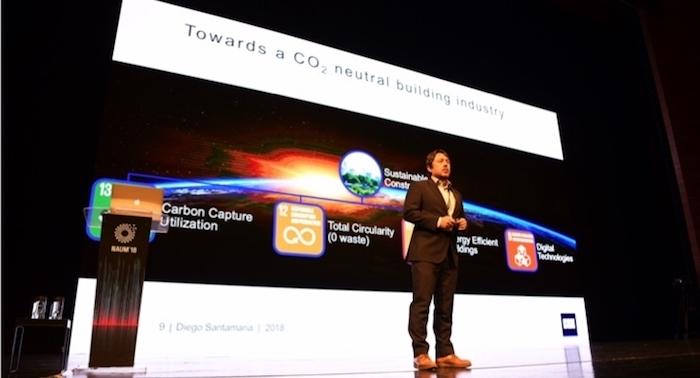
Interconnected buildings, electro vehicles, connected and autonomous cars, wearable sensors – all is possible with graphene nanotubes.
36 distinguished experts from global corporations and the world’s leading research institutes spoke in Shanghai to reveal how tomorrow becomes today.
Almost 430 delegates from 22 countries around the globe gathered in Shanghai for the annual Nanoaugmented Materials Summit. They networked with industry pioneers, learned from experts and explored applications for graphene nanotubes, also known as single-wall carbon nanotubes. Executives, researchers, and experts shared their experience over the 2-day event, touching on various applications for graphene nanotubes to enhance materials – including how these materials help work toward a greener world.
Many of the resources used on a daily basis are non-renewable, and companies at the forefront of innovation are constantly searching for ways to replace or reduce the use of those materials. Graphene nanotubes provide the solution for many companies as they develop next-generation products in the field of construction, oil and gas, transportation, electronics and more.
“Why do we want to develop new materials and new ideas? We consider the environment and try to reduce CO2 emissions, for instance, by making strong and light materials to be used in transportation,” said Professor Hansang Kwon, CEO of Next Generation Materials. “If we can use less material to reduce air pollution, as well as gas and energy consumption, it’s a breakthrough for the world. From this viewpoint, we’re looking for the strongest, lightweight, multi-functional, energy-saving materials – such as the combination of single-wall carbon nanotubes and our aluminum product.”
“Imagine buildings being interconnected – telephones, cars, energy, people. I believe this is only possible with nanomaterials, which will have a huge impact on sustainability. In concrete, for example, we are foreseeing integrated heating with conductive materials made from concrete and single-wall carbon nanotubes," said Diego Santamaria Razo, director innovation at the Centre for Sustainable Construction. "Adding the single-wall carbon nanotubes also permits the concrete to be thinner, leading to added space for insulation, which means less energy used when heating and cooling buildings.”
“Single-wall carbon nanotubes are a wonder material that will change our lives in many ways because of their unique properties,” added Dr. DeChun Fu, managing director of BYK Additives, Shanghai.
The company has created an additive designed to help customers implement solutions with graphene nanotubes easily.
“We’ve seen clear performance improvements with this collaboration. With OCSiAl’s graphene nanotube content, we saw perfect dispersion, perfect conductivity, and perfect balance and synergistic effects, for instance, in a bumper primer coating system,” he said. “I believe there will be more futuristic applications of nano-augmented materials that take advantage of graphene nanotube benefits. The only limit is our imagination.”
Motion sensors, healthcare devices, electrocardiograms incorporated into car seats – wearable electronics will be a must-have in the near future. Professor Choon-Gi Choi from the Korean Electronics and Telecommunications Research Institute examines various nanomaterials to meet the high requirements for sensors.
“A number of tests that we have conducted show impressive results in the sensing performance of TUBALL graphene nanotubes," Professor Choi said. "They are proving to be suitable for highly reliable pressure-strain sensor applications.”
“The cars of the future will communicate with other cars, people, buildings and so on,” said Ivica Kolaric, GM business unit process industries, Fraunhofer IPA. “This requires a lot of sensors leading to a higher demand for functional materials and better electronics, and as a consequence – to a rising demand for carbon nanotubes. The future of nanotubes is strongly associated with single-wall carbon nanotubes that offer the potential for new business.”
Source: Coatings World
